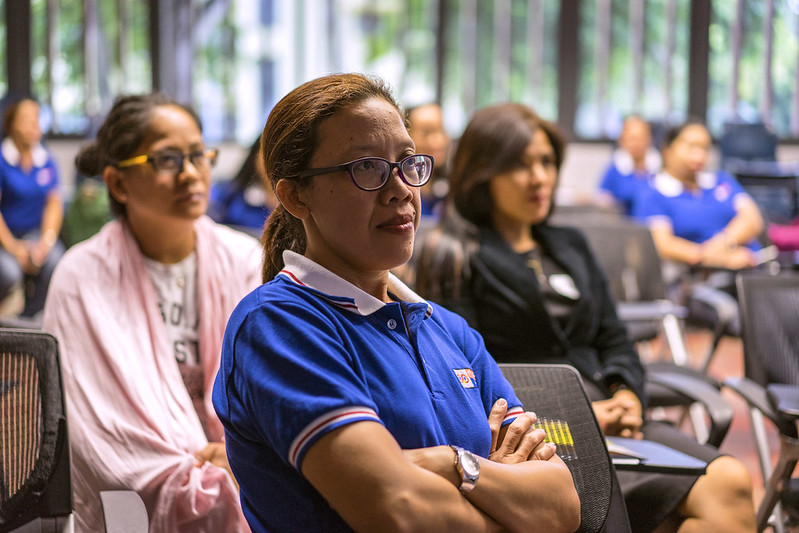Singapore’s Social Safety Net: A Blueprint for Reducing Poverty
 Singapore, often hailed as an economic miracle, boasts a diverse economy that has propelled the nation to high-income status. Additionally, the country’s financial landscape is distinguished by a blend of globally leading industries, including manufacturing, services and emerging sectors. Manufacturing, a cornerstone of Singapore’s economy, spans electronics, chemicals and biomedical sciences. Furthermore, it contributes significantly to gross domestic product (GDP) and employment.
Singapore, often hailed as an economic miracle, boasts a diverse economy that has propelled the nation to high-income status. Additionally, the country’s financial landscape is distinguished by a blend of globally leading industries, including manufacturing, services and emerging sectors. Manufacturing, a cornerstone of Singapore’s economy, spans electronics, chemicals and biomedical sciences. Furthermore, it contributes significantly to gross domestic product (GDP) and employment.
Meanwhile, the services sector encompasses finance, insurance, tourism and, more recently, data hosting and digital services. The sector has made Singapore a hub for innovation and business. This diversity is a critical factor in Singapore’s resilience. Additionally, it has enabled the country to weather global economic fluctuations and adapt to new trends, such as digital transformation and green technologies. The government’s strategic investments in education, research and infrastructure have further bolstered the economy’s adaptability, ensuring sustainable growth and job creation.
Singapore’s Social Safety Net
Singapore’s approach to social welfare is built on a unique social compact designed to provide opportunities for all citizens, regardless of background. This compact is underpinned by five pillars: asset building, education, health care, housing and employment. These pillars form a robust safety net that protects vulnerable groups, promoting social mobility and financial security.
- Education: Education is a cornerstone of Singapore’s social policy. Indeed, it reflects the belief that education is a key driver of economic mobility. The government invests heavily in education at all levels, ensuring access to quality schooling and lifelong learning opportunities. Initiatives like SkillsFuture encourage citizens to upgrade their skills continuously, keeping pace with the evolving job market. This emphasis on education equips Singaporeans with the knowledge and skills necessary to thrive in a competitive global economy.
- Health Care: Singapore’s health care system is renowned for its efficiency and accessibility. The government employs a multi-tiered approach to health care financing, combining personal responsibility with state support. This approach ensures all citizens have access to basic health care services. Programs like MediShield Life and the Community Health Assist Scheme (CHAS) help alleviate the financial burden of medical expenses, particularly for the elderly and lower-income groups. Furthermore, this guarantees that no Singaporean is denied health care due to monetary constraints, contributing to a healthy and productive population.
- Housing: Homeownership is another key pillar of Singapore’s social safety net. The government’s public housing program, managed by the Housing & Development Board (HDB), provides affordable residences for most Singaporeans. Subsidies and grants allow lower- and middle-income families to own homes. This policy improves living standards and serves as asset-building, helping citizens accumulate wealth over time.
- Employment: The government has implemented various programs to support lower-wage workers, ensuring they can achieve a decent standard of living. The Workfare Income Supplement (WIS) scheme, introduced in 2007, provides cash and Central Provident Fund (CPF) contributions to supplement the incomes of lower-wage workers. The Progressive Wage Model (PWM), launched in 2012, sets minimum wage levels for specific industries and outlines career progression pathways. These initiatives are part of a broader effort to reduce income inequality and promote social inclusion.
The Many Helping Hands Approach
In addition to government-led initiatives, the Many Helping Hands (MHH) approach supports Singapore’s social safety net. This community-based framework involves government bodies, donors, grantmakers, enablers, volunteers and Voluntary Welfare Organizations (VWOs).
The MHH system ensures that social assistance reaches the most vulnerable members of society, providing comprehensive support beyond just financial aid. One notable program under this framework is ComCare, which was launched in 2005. ComCare consolidates various welfare projects to offer more streamlined and effective support for those in need. It provides financial assistance, medical support and social services, catering to the diverse needs of low-income families, elderly citizens and individuals facing health care challenges.
Looking Forward
Singapore’s success in achieving a high-income and financially secure population is largely due to its diverse economy and comprehensive social safety net. Additionally, the government’s forward-looking policies in education, health care, housing and employment, combined with community-based support through the MHH approach, have created a resilient and inclusive society. This model aims for all citizens to lead fulfilling lives, regardless of socioeconomic background. As Singapore continues to evolve alongside global challenges, its commitment to social equity remains a guiding principle for sustained prosperity and social harmony.
– Asiya Siddiqui
Asiya is based in Fremont, CA, USA and focuses on Business and Good News for The Borgen Project.
Photo: Flickr
